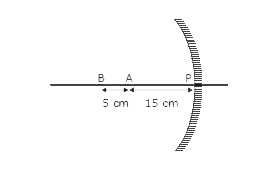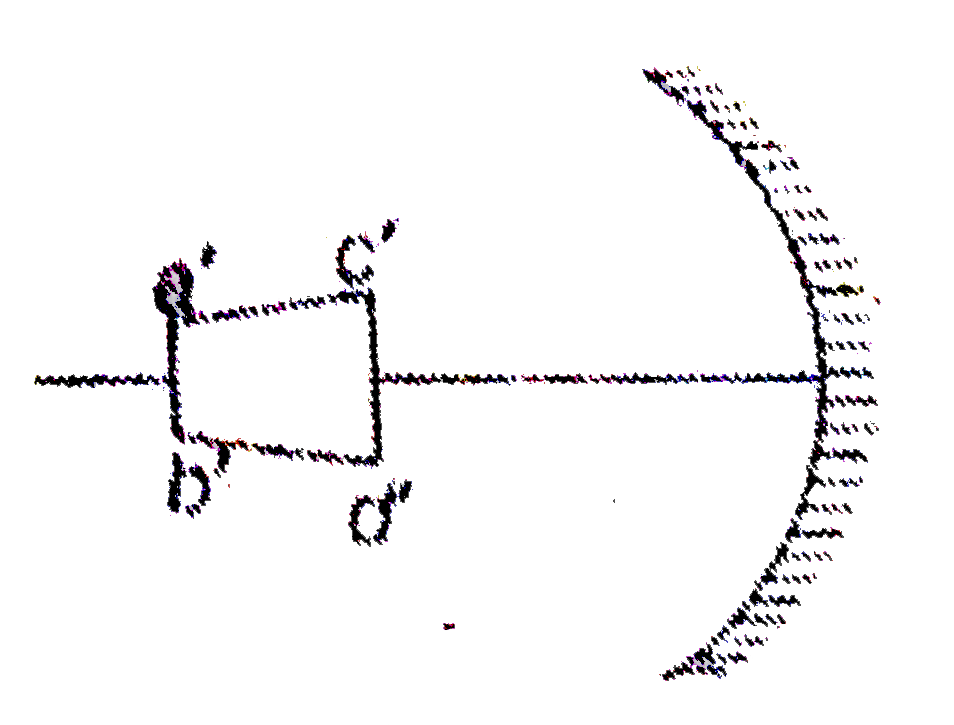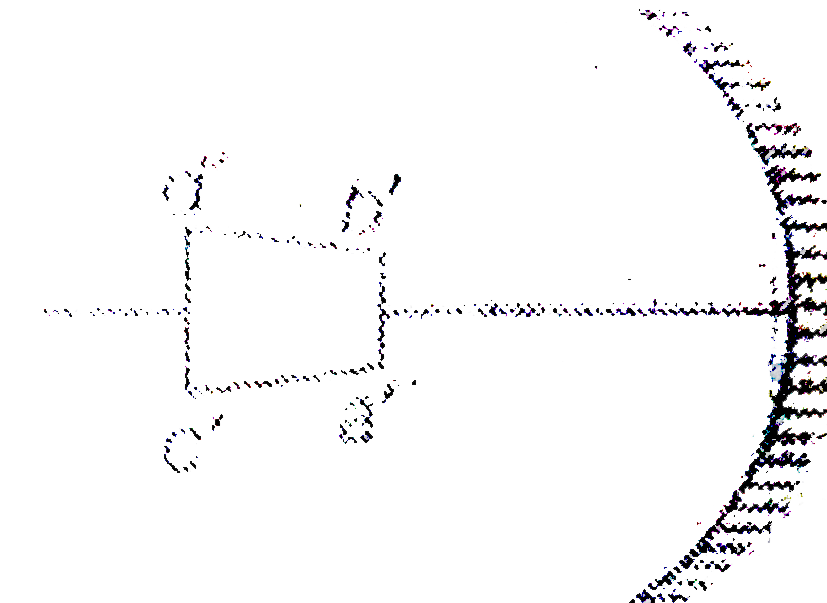A particle is dropped along the axis from a height f2 on a concave mirror of focal length f as shown in figure. Find the maximum speed of image .
_S01_010_Q01.png)
vM1=−m2vOM=−m2(>) where.
m=ff−u=−f−f+(f2−ft22)=2ff+>2⇒v1=−(2ff+>2)2(>)=−4f2>(f+>2)2
For maximum speed dvIdt=0⇒t=√f3g⇒vImax=34√3fg
Topper's Solved these Questions
- GEOMETRICAL OPTICSBook:ALLENChapter:GEOMETRICAL OPTICSExercise:SOME WORKED OUT EXAMPLES
Explore 84 Videos
- GEOMETRICAL OPTICSBook:ALLENChapter:GEOMETRICAL OPTICSExercise:EXERCISE -01
Explore 65 Videos
- CURRENT ELECTRICITYBook:ALLENChapter:CURRENT ELECTRICITYExercise:All Questions
Explore 427 Videos
- GRAVITATIONBook:ALLENChapter:GRAVITATIONExercise:EXERCISE 4
Explore 9 Videos
Similar Questions
An object is placed between a plane mirror and a concave mirror of focal length 15 cm as shown in Figure . Find the position of the images after two reflections.

View SolutionA rod AB of length 5 cm is placed in front of a concave mirror of focal length 10 cm as shown in figure. The length of the image of AB formed by the mirror is

View Solution
Knowledge Check
An object is placed in front of a concave mirror of focal length f as shown in figure. Choose the correct shape of the image.
 A
A B
B C
C D
D
A short linear object of length / lies along the axis of a concave mirror of focal length f at a distance d from the pole of the mirror. The approximate size of the image is
AIf(d+f)Bd+ffICIf2(d+f)2DI(d+f)2f2For a concave mirror of focal length f, image is 2 times larger. Then the object distance from the mirror can be
Af2B3f2Cf4D4f3
(a) A short linear object of length b lies along the axis of a concave mirror of focal length f at a distance u from the pole. What is the size of the image? (b) If the object begins to move with speed V0 , what will be the speed of its image?
View SolutionA particle is moving at a constant speed V from a large distance towards a concave mirror of radius R along its principal axis. Find the speed of the image formed by the mirror as a function of the distance x of the particle from the mirror.
View SolutionA short linear object of length / lies along normal to the axis of a concave mirror of focal length f at a distance d from the pole of the mirror. The size of the image is then (nearly)

View SolutionA short linear object of length b lies along the axis of a concave mirror or focal length f at a distance u from the pole of the mirror. The size of the image is approximately equal to
View SolutionA short linear object of length b lies along the axis of a concave mirror or focal length f at a distance u from the pole of the mirror. The size of the image is approximately equal to
View Solution